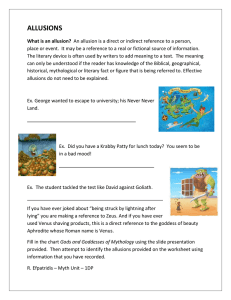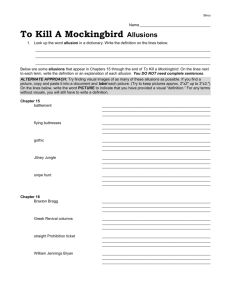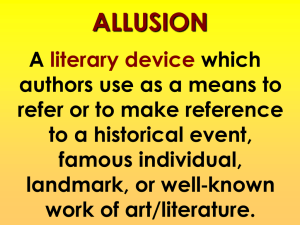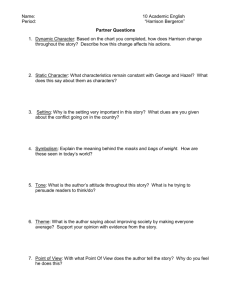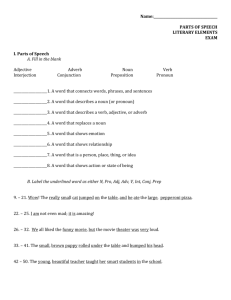Notes: Literary Devices
advertisement
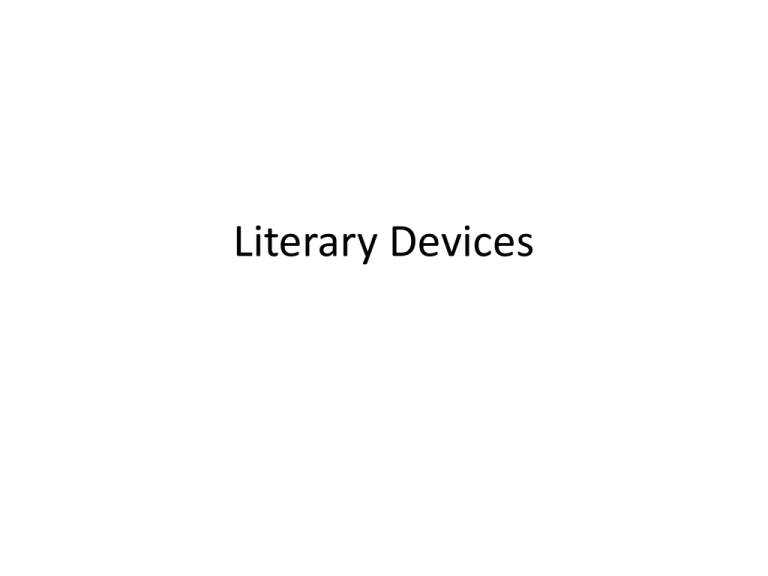
Literary Devices Literary devices are used to: call attention to the important parts of a story make the writing style memorable add to the characterization, setting, plot, and theme Foreshadowing • hints and clues that the author gives the reader about what will happen later in the story • used to build anticipation in the reader Example: “…as though he waited for some beast of the woods to come within the range of his vision…” (Munro 11). Personification • giving human characteristics to an object or creature that is not human Examples: The sun smiled down on us. The leaves danced in the breeze. Hyperbole • extreme exaggeration used to make a point Examples: I have a million things to do today. He is as old as the hills. These books weigh a ton. Onomatopoeia • the naming of an object or action by a vocal imitation of the sound associated with it Examples: buzz, hiss, swish, bang, clap Alliteration • the repetition of initial consonant sounds in words Example: “The rest of Harrison’s appearance was Halloween and hardware. Nobody had ever worn heavier handicaps” (Vonnegut 7). Symbol: • a person, place, object, or image that represents another idea, feeling, or belief • a symbol has its own meaning, but also stands for something beyond itself Examples: wine in “The Interlopers” handicaps in “Harrison Bergeron” cigarettes in The Fault in Our Stars Symbolism: • the author’s use of symbols adds meaning to a story • General symbols stand for universal ideas Examples: heart for love, skull for death • Constructed symbols created by an author to represent an important idea in a particular story Examples: ruby slippers in The Wizard of Oz, handicaps in “Harrison Bergeron” Allusion = a brief reference to a wellknown person, place, historical event, literary work, or work of art Types of Allusions: • • • • Biblical Historical Classical (mythology) Literary (fairy tales often become allusions Prince Charming, Big Bad Wolf, Sleeping Beauty, Rapunzel) • Shakespeare allusions are common • Popular culture/ sports Allusions: • Why do authors/ artists/ musicians use “allusion”? - helps create a certain mood quickly, without a lot of explanation - connects author/ artist/ musician to the reader or audience Imagery The use of descriptive and/or figurative language to create “word pictures” in the mind of the reader Imagery Figurative language includes • Metaphor • Simile • Hyperbole • Personification • Alliteration • Onomatopoeia
